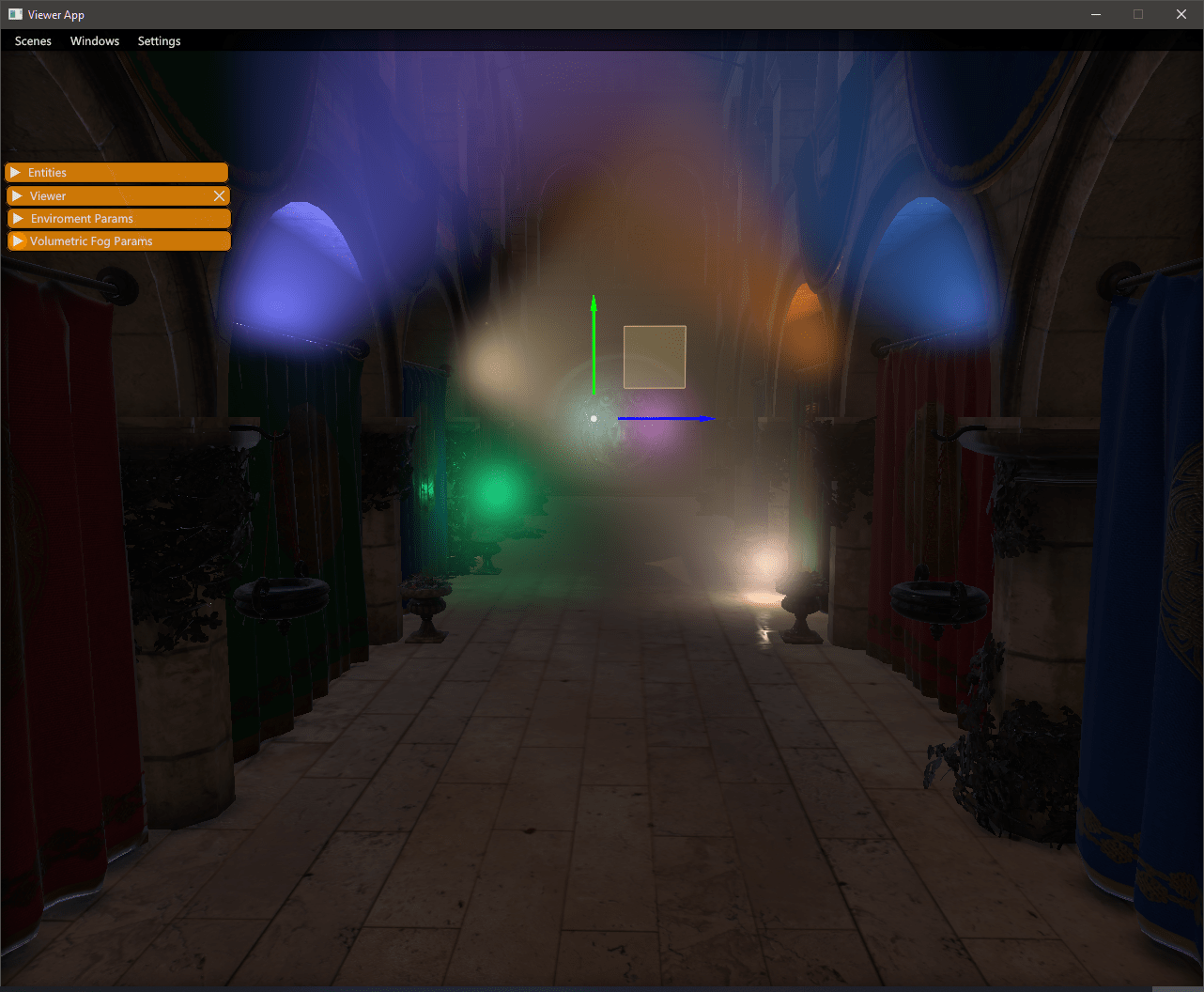Get in contact on Discord! https://discord.gg/wuYPxUF
Check out the documentation (WIP) here: https://gscept.github.io/nebula-doc/
- OS: Windows and Linux (WIP)
- Compiler with support for C++20.
- GPU and drivers supporting Vulkan 1.2+
- CMake 3.21+
- Python 3.5+
- Python requirements (Windows):
- Matching architecture (64-bit if you're building for 64-bit systems)
- Installed for all users
- Added to PATH
- Installed with debugging symbols and binaries
- Python requirements (Windows):
The fastest way to setup and test nebula is to clone the Nebula-demo instead. It contains a setup.bat which will setup dependencies and configure a
solution for you to run. If you add a -editor commandline argument it will start with the editor ui enabled.
Apart from that there are a few simple projects in the test folder.
Fips will take care of getting the relevant dependencies (including the actual engine in case you are setting up a external project)
If you want to proceed with the normal setup you can follow the instructions below.
fips set config win64-vstudio-debugin your project directory, e.g. the cloned nebula-demo. There are other configs available, see in fips-files/configsfips fetchDownloads/checks out all the other required repositories
Run fips nebula verb to set work and toolkit directory registry variables:
fips nebula set work {PATH}(If you are building an external project, this would be the current path)fips nebula set toolkit {PATH}(this is the path to where the nebula checkout resides, if an external project that would be ../nebula)
In your project directory:
fips physx build vc17 debug(if you are running VS 2022, usevc16orvc15for vs 2019/2017 instead)fips anyfx setupfips gento generate the required build system files, e.g. a visual studio solutionfips buildto directly compile the project orfips opento open the generated solution in your selected environment
Once the project is setup and working there are some common operations that you may have to perform.
If you are adding new files, either source or templates or other flatbuffer things that you add to cmake or a cmake subfolder will typically picked up by running fips gen. This will regenerate your solution via cmake, in case you are using visual studio it will normally
notice and prompt reloading. Generally calling fips gen is a safe operation you can do if dependencies change etc.
The project you are working in is commonly synced with e.g. git or some other version control, if you have other fips dependencies that changed, you can do a fips update to perform a git pull on the depencies used.
Content is usually batched using the assetbatcher contained in the nebula repository which is built by default by projects as well. Running it will incrementally convert or cook content in your work folder to an export folder in the project location. It has a number of options to force or only batch specific folders, as well as
the option to be run in parallel. Running it with -help will print some of the options available.
Fips will place the solution and makefiles and the like in the ../fips-build/projectname/projectconfig/ folder. Easiest is to just use fips open to start your editor
Nebula is being developed continuously, which means that features keep getting added all the time. Currently, we support this:
- Completely data-driven design from bottom to top.
- Data structure suite, from containers to OS wrappers, everything is designed for performance and minimal call stacks.
- Multithreading.
- SSE-accelerated and intuitive maths library.
- Full python supported scripting layer.
- Advanced rendering framework and shaders.
- Test-benches and benchmarking.
- Profiling tools.
A lot of effort has been made to the Nebula rendering subsystem, where we currently support:
- Unified clustering system - fog volumes, decals and lights all go into the same structure.
- Screen-space reflections - working condition, but still work in progress.
- Horizon-based ambient occlusion done in compute.
- Physically based materials and rendering.
- Multi-threaded subpass recording.
- Shadow mapping for local lights and CSM for global/directional/sun light.
- Volumetric fog and lighting.
- Geometric decals.
- CPU-GPU hybrid particle system.
- Skinning and animation.
- Scripted rendering path.
- Vulkan.
- Tonemapping.
- Asynchronous compute.
- Virtual texturing using sparse binding.
- Adaptive virtual textured terrain.
- Fast and conservative GPU memory allocation.
- Area lights.
Nebula has historically had a database-centric approach to entities. With the newest iteration of Nebula, we've decided to keep improving by adopting an ECS approach, still keeping it database-centric.
- Data-oriented
- Data-driven
- Minimal memory overhead per entity.
- High performance without compromising usability or simplicity
- Blueprint and template system for easily instantiating and categorizing entity types.
- Automatic serialization and deserialization
Deferred Lighting using 3D clustering and GPU culling.
 Geometric decals, culled on GPU and rendered in screen-space.
Geometric decals, culled on GPU and rendered in screen-space.
 Volumetric fog lighting.
Volumetric fog lighting.
 Local fog volumes.
Local fog volumes.
 Profiling tools.
Profiling tools.

